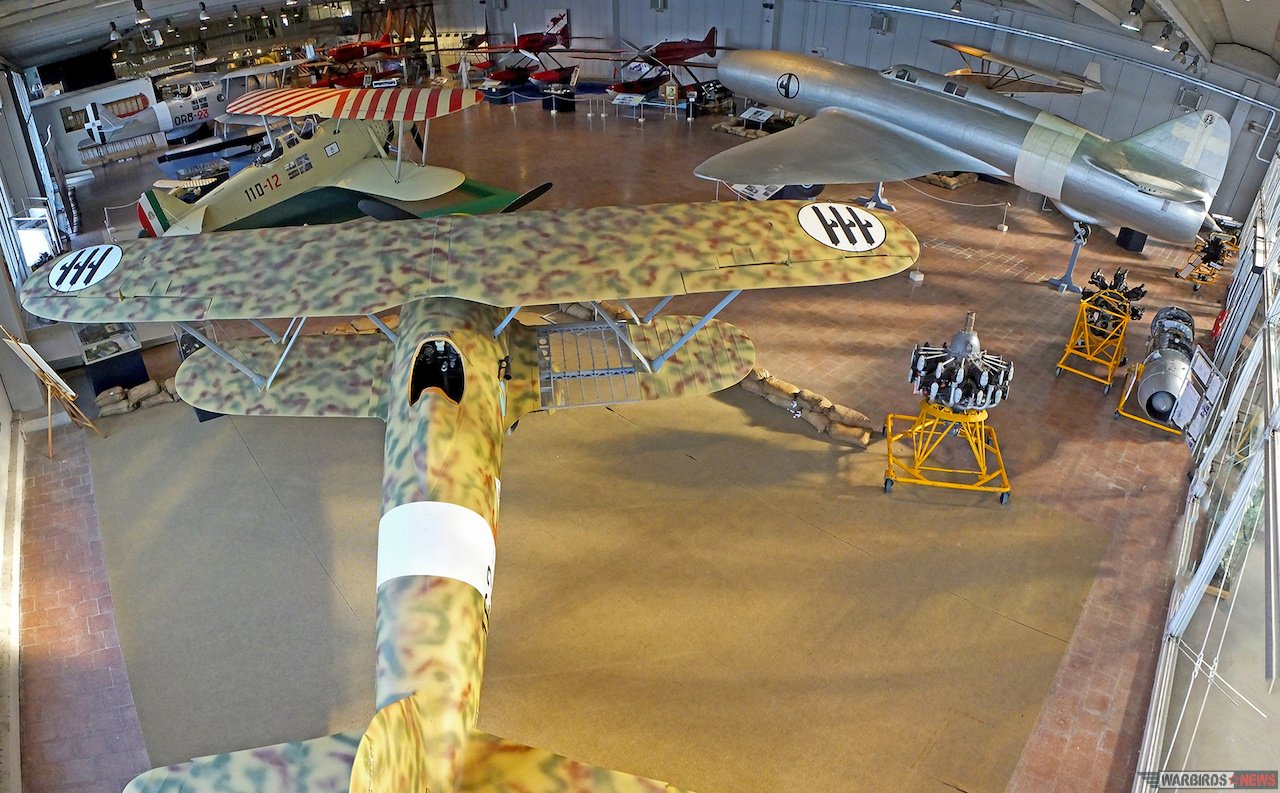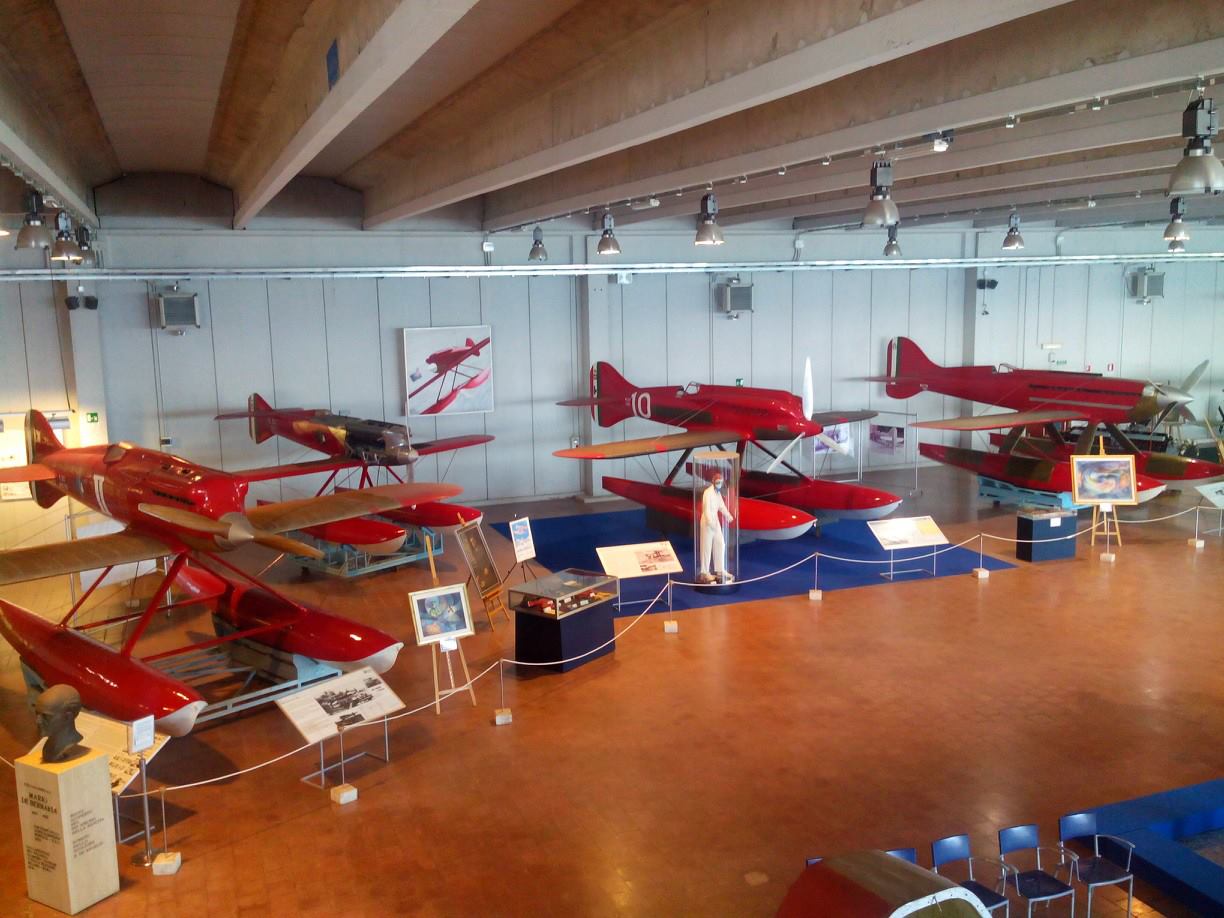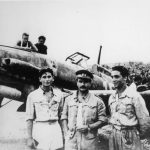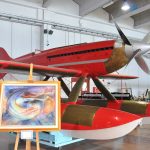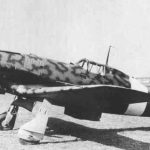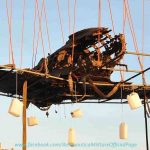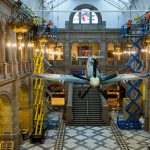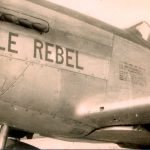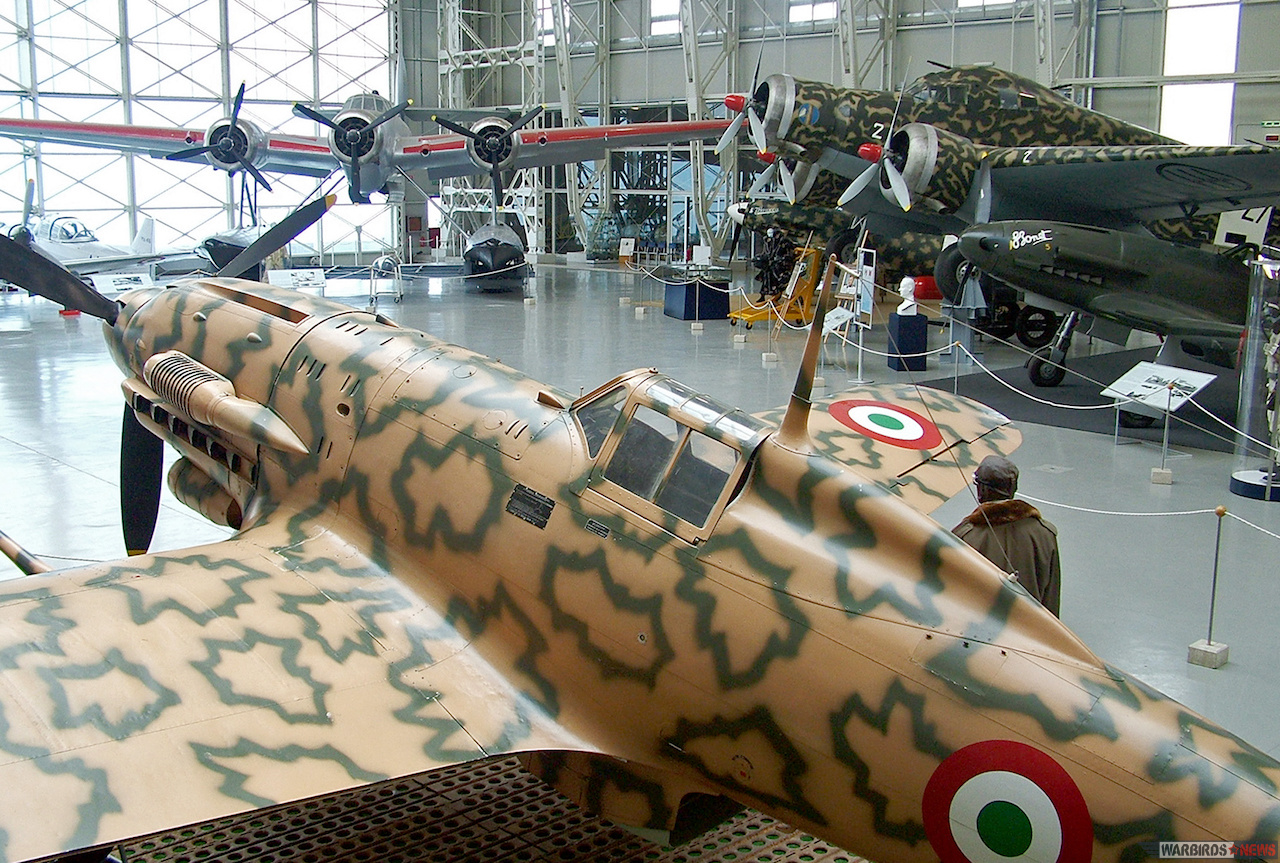
WarbirdsNews founding editor, Moreno Aguiari, recently paid a visit to the Italian Air Force Museum and interviewed its Director, Lt.Col. Pierluigi Poletti. We hope our readers will enjoy learning more about this important museum. Located in the former seaplane station in Vigna di Valle on the south shore of Lake Bracciano, the Italian Air Force Museum is in one of the most picturesque settings imaginable, between the volcanic lake’s deep blue waters and the surrounding rolling green hills. Vigna di Valle is the oldest seaplane base in Italy, as it dates back to the dawn of aviation in 1904, when the first Experimental Aviation Yard was founded by the father of Italian Aviation, Major Maurizio Moris of the Corps of Engineers. This makes the site itself an integral element in telling the story of the Italian Air Force; much in the way that Hendon is for the Royal Air Force and Dayton is to the US Air Force.
Museum Overview:
The Italian Air Force Historical Museum is charged with collecting, restoring, conserving and displaying aviation artifacts of historical and documentary importance to the Italian Air Force. It also promotes the history and culture of aviation, be it scientific or documentary in nature. One of the most important Museum activities is the recovery and restoration of historical aircraft. Expert technicians recondition the aeroplanes using period-appropriate techniques and materials, most of which are increasingly difficult to find.
With 13,000m² (140,000ft²) of covered exhibition space, the Italian Air Force Museum is one of the largest and most significant aviation museums in the world. This is not so much for the number of aircraft on display, but for their quality, with a good number of airframes being unique survivors. Four large hangars house over sixty aircraft and a significant collection of aero engines, as well as mementos of all types that tell, in chronological order, the history of military flying in Italy and of the men who lived and shaped it. The museum tour starts in the Troster Hangar which has exhibits dedicated to the Pioneers, the Airships, and the First World War. Next comes the Velo Hangar with features on General Nobile’s epic Polar Flights, the Great Mass Formation Flights, the Schneider Trophy air races, and aircraft from the period between the two World Wars. The Second World War and large airplanes are displayed in the Bodoni Hangar. The Skema Hangar concludes the museum journey, which covers the post-war revival of the Italian Air Force, including contemporary jet aircraft of the modern military.
Interview with Lt. Col. Pierluigi Poletti, director of the Italian Air Force Museum:
(Translated from the original Italian by Alessandro Taffetani)
WN: When did you start your role as Museum Director?
I originally arrived at the Museum in June, 2011. After a six month mentoring period with the previous director – Lt.Col. Massimo Mondini – I officially took the post of Director on September 7th 2011.
WN: What are the main challenges when managing such an important museum?
The museum is a very complex entity, and we are faced with many challenges. Surely the biggest problem comes from the Armed Forces’ budget restrictions. The decommissioning of many Italian Air Force storage facilities for instance – where we kept aircraft not ready for exhibition – meant a great deal of relocation work. We are currently undertaking major maintenance work on all our hangars; taking care of problems like water infiltration, upgrading our fire protection infrastructure, smoke detectors, CCTV and anti-intrusion systems. Once this renovation is completed we will tackle the exhibition space issue, as the current areas are full.
WN: What are the best rewards of this job?
Surely the contact with the public. There’s nothing more rewarding than receiving compliments for the way our museum is kept. Another reason for satisfaction is the completion of a restoration project and the arrival of a new aircraft at the museum.
WN: Can you explain the aircraft acquisition process?
We already have a well-established collection of historical aircraft belonging to the Italian Air Force. New additions to the historical collection are therefore rare, and can happen either thanks to exceptional finds (like the Ro.37 wrecks recovered from Afghanistan) or recovery of airframes at sea. The Air Force policy for modern aircraft that have just been decommissioned is to reserve two airframes for the museum.
WN: Are you allowed to request a specific aircraft from the Air Force?
We liaise regularly with the Logistics Command and the Historical Office of the General Staff. We normally coordinate with them to ensure we get the retired aircraft with the best condition and configuration that we want.
WN: Can you do trades/leases with other museums?
Absolutely. There are excellent working relationships with other aviation museums in Italy, with long term loans or permanent transfers in exchange of an agreed service, for example the restoration of an aircraft. Exchanges with foreign museums are rarer, but still possible.
WN: What are the main difficulties in managing an aviation museum on a particular location such as the shore of Bracciano Lake?
Bracciano Lake is absolutely a natural paradise. Things get a bit tougher in the winter months, when the climate turns rather frigid and windy. This causes stress to the structures and above all makes it very expensive to keep warm. Another challenge with the location is the fact that while it can be reached by means of public transport, it’s rather complicated to do so. If we were located in the urban area of Rome for instance, our visitor numbers would probably increase ten-fold.
WN: What are the numbers of the military and civilian personnel working in the museum?
We have roughly 50 people working directly for the museum. We then have roughly 20 volunteers – all members of the Air Force Association branch of Bracciano – who work as tour guides.
WN: Is the museum financed by the Italian Air Force or by the Ministry of Defence?
The museum is funded exclusively by the Italian Air Force.
WN: How many people visit the museum every year?
The average is between 60 and 70 thousand visitors per year.
WN: Do you offer internships or experience days for schools?
We offer museum guide internships to tourist offices. We also organize an annual course of historic aircraft restoration.
WN: Now a bit about yourself: can you tell us more about your experience in the Air Force?
I joined the Air Force Academy in 1979, following which I was sent to the United States, where I obtained the Navigation Officer qualification with the USAF at Mather AFB (near Sacramento, California) and Holloman AFB (near Alamogordo, New Mexico). After my syllabus, I was assigned to the 155th Fighter Group on the Tornado bomber aircraft, on which I logged around 1500 flying hours. In 1993 I was assigned to NAEW Geilenkirchen, where I qualified as instructor and crew-checker on AWACS aircraft, where I logged 2000 hours.
Once back in Italy, I was assigned to the Head Office Operations with the test range of Salto di Quirra in Sardinia. In 2000 I was assigned to the Air Force Logistics Command in Rome. In 2002 I was moved to SHAPE (Belgium), where I took command of the J3 Air group and subsequently was appointed as clerk to the Director of Staff office. In 2006 I returned to the Logistics Command until the assignment with the Historical Museum.
WN: What is the favourite aircraft you flew in?
The Tornado without a doubt, with which I took part in two Red Flags and the first Gulf War.
WN: If you could fly any aircraft in the museum which one would you choose and why?
I would say the FIAT G.55 Centauro, perhaps the best Italian fighter of WWII. This aircraft is also linked to the sacrifice of the ANR (Aeronautica Nazionale Repubblicana – Republican Air Force) which defended northern Italian cities from the bombing of civilian targets and is tied to legendary pilots like Adriano Visconti, altough he never flew it in combat.
WN: How does it feel to actually work, touch and take care of aircraft that are so important to our aviation history?
It’s a great privilege and responsibility. I consider historical aircraft the mementos that remind us every day that modern pilots are the very result and consequence of that wonderful heritage.
WN: If you could acquire an Air Force aircraft that is currently not in the collection, which would you choose?
Speaking of historical aircraft, my dream would be to have a Bf 109 in the museum.
————————————————
WarbirdsNews wishes to thank Lt.Col. Poletti very much for his time answering our questions, and for the magnificent job he is doing in the preservation of global aviation history.
For those visiting Rome, the Italian Air Force Museum is located as below:
MUSEO STORICO A.M.
Aeroporto “Luigi Bourlot”
Aeroporto “Luigi Bourlot”
Strada Circumlacuale, snc
Loc. Vigna di Valle
00062 – Bracciano (Roma)
00062 – Bracciano (Roma)
Click HERE to Visit the Italian Air Force Museum’s website
Click HERE to watch an interview with Lt Col Poletti ( In Italian)
[inpost_galleria thumb_width=”200″ thumb_height=”200″ post_id=”16351″ thumb_margin_left=”3″ thumb_margin_bottom=”0″ thumb_border_radius=”2″ thumb_shadow=”0 1px 4px rgba(0, 0, 0, 0.2)” id=”” random=”0″ group=”0″ border=”” show_in_popup=”0″ album_cover=”” album_cover_width=”200″ album_cover_height=”200″ popup_width=”800″ popup_max_height=”600″ popup_title=”Gallery” type=”yoxview” sc_id=”sc1449620001288″]








